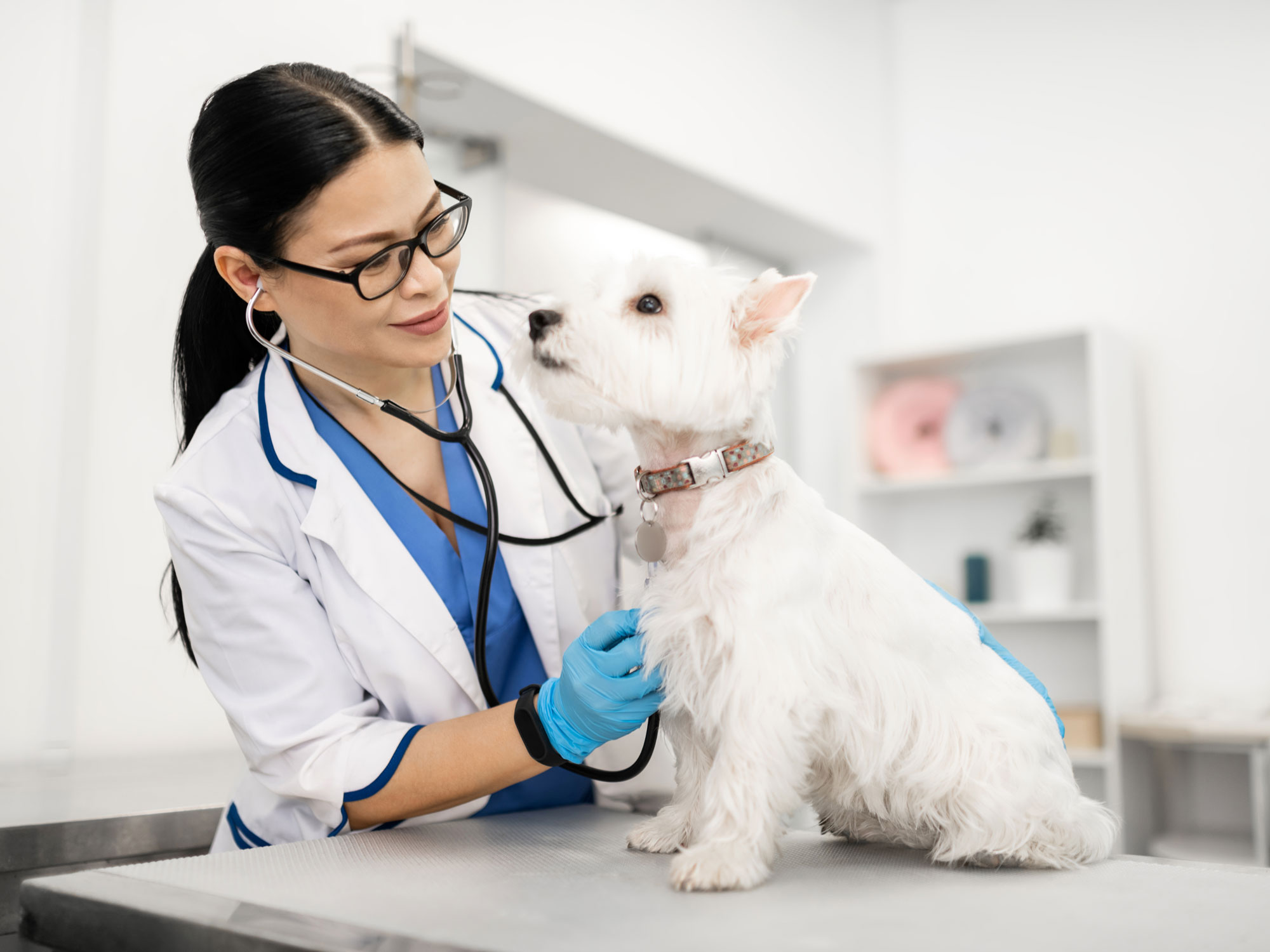

How Does Pet Insurance Work?
Pet insurance is an insurance policy purchased by pet parents to help reduce the overall costs of expensive veterinary bills. Pet insurance will cover, either entirely or in part, the often-costly veterinary procedures.
Veterinarians must often have difficult conversations with pet owners about health care costs for their pets. It’s imperative that you purchase the right health care plan for your pet. This will give you peace of mind since regular veterinary visits are necessary for your pet’s health!
What is Pet Insurance?
Pet health insurance is a policy like human health insurances policies, but for pets. It comes with a monthly premium, and if your pet is ill or has been in an accident, you take care of the bill upfront and then submit a claim to your insurance provider. Although pet insurance policies all cover veterinary care, they will differ in numerous ways.
Depending on your policy, you will need to pay a deductible and a percentage of the veterinary bill. You’ll need to keep in mind that most pet health insurance carriers will usually exclude pre-existing conditions and specific illnesses.
Monthly premiums are dependent on the insurance plan and are affordable for most pet parents. The benefit of pet insurance is that you won’t have to worry about the cost of treatment and there will be no second-guessing as to whether you can afford an effective procedure.
Comprehensive pet insurance always offers you a financial safety net when your cat or dog may need expensive emergency care or if he or she gets sick or injured. It’s especially beneficial if you opt for a plan as soon as you bring your pet home.
How Does Pet Insurance Work?
On a monthly basis, pet health insurance is similar to renter’s home insurance. You pay a monthly premium to your insurer for your pet’s health coverage. Your policy will outline which conditions/expenses are covered, your reimbursement rate, deductible, and the maximum payout (or annual limit). Unfortunately, not all plans are the same, and you’ll need to do some research to find a pet health plan that works for you.
Most pet health insurance plans will reimburse you, the policyholder, rather than pay the veterinarian directly. This means you don’t have to concern yourself about finding an “in-network” veterinarian and can benefit from your coverage at any licensed veterinary clinic or pet hospital in the U.S. Pets Best does offer the option of paying bills to the veterinarian directly, and you’ll find in-network vets that will use the direct-pay option.
What Does It Cover? Veterinary pet insurance will generally cover unexpected injuries or illnesses and emergency veterinary care, known in the industry as accident and illness coverage. They’ll also include costs for hospital care, x-rays, and more. They are flexible and diverse in scope.
Pet insurance works on a reimbursement basis. So, you can consult any veterinary specialist of your choosing. The benefits are not bound to in-network services only.
Many pet insurance carriers don’t cover costs related to genetic illnesses like hip or elbow dysplasia. Before purchasing a pet health plan, you should call and check whether your plan covers diagnostics like MRIs, blood work, routine checkups, and even dental care.
A few pet insurance carriers like ASPCA pet insurance include positive dog training, behavioral issues, preventative training, general checkups, and dental care. All in all, you’ll need to read plenty of pet insurance reviews and compare plans to see which will work best for you and your pet.
Just as pet parents do well with comprehensive health insurance, the necessity for pet insurance with rising veterinary care costs and the alarmingly high cancer rates in dogs is so apparent today!
Senior pets also continue to live longer lives, and with that comes senior pet care and costly pharmaceuticals. Pet insurance is beneficial because you get to choose the best care for your pets, knowing that you don’t have to worry about whether you can afford them.
Being a pet parent means taking good care of your pets throughout their lives. This means consistent veterinary care, which includes the following:
- Routine veterinary care
- Preventative vaccinations
- Parasite control
- Treatment during an illness or emergency
- Dental care and cleaning twice yearly
- Pharmaceuticals and supplements
Pet insurance companies require that pet owners take their pets to the veterinarian regularly for routine health checkups. This helps the pet stay healthy. They can also impose a waiting period before the insurance takes effect. The waiting period for accident coverage is usually a few days.
Again, pet insurance, unlike health insurance for humans, doesn’t restrict which veterinarian you must visit, except for a few companies. This means you don’t have to worry about going to an “in-network” veterinarian.
Vet bills and medical costs associated with illness and accidents can sometimes be costly. Pet insurance is an excellent way to handle these costs instead of using your credit card. The best part is that pet insurance has several plans, so you can find the one that suits your budget, and if you’re a multi-pet household, remember to find a program that offers discounts for multiple pets.
Suppose you’re okay with routine veterinary bills but unsure how you’re going to pay for a major catastrophic illness or surgery and hospitalization. In that case, you should only opt for a plan that covers major veterinary issues.
Either way, pet insurance policies feature unlimited veterinary healthcare benefits for the life of your pet with no caps on coverage for certain conditions like cancer treatment. Do your research, just as you would for comprehensive health insurance.
By comparing pet insurance plans, you’ll be able to go above and beyond for your pet because you’ll be able to review the differences between pet insurance companies.
Pet Insurance with Dental Coverage
Dental health conditions like periodontal disease, if left untreated, can destroy your dog’s teeth at the root and cause an infection in the gums and jawbones that may enter the bloodstream.
If you buy a policy like Embrace’s that covers routine dental care, treatment will be affordable and convenient. Here’s an example from Embrace:
Embrace’s Dental Insurance Coverage
Embrace policies offer coverage for canine dental treatments linked to new dental mishaps and illnesses that affect the teeth and gums. Their coverage includes, but is not limited to the following:
- Broken, chipped, & fractured teeth
- Extractions
- Gingivitis
- Root canals & crowns
- Stomatitis
- Periodontal disease
- Dental injuries are covered up to your policy limit, and dental illnesses are covered up to $1,000 per policy year with Embrace.
How Do You Get Reimbursed with Pet Insurance?
- Pay your bill
- Submit your claim to the insurance company
- Receive reimbursement from 70% to 100% of covered expenses (after the deductible is met)
The way pet insurance works is summarized in these three steps:
#1. Get Your Pet Treatment and Pay
Unlike our health insurance policy, which pays the insured’s medical bills upfront, pet insurance reimburses you after paying for the treatment. So, when your pet feels unwell, visit your veterinarian, get him diagnosed and treated, and pay the vet bill.
#2. File and Submit Your Claim
After your pet has received treatment and after you’ve paid the bill, the next step is to file a claim. A claim is just proof that you visited a veterinarian and received treatment. The claim includes the medical records and a copy of the vet’s invoice.
When you submit a claim to your pet insurance company, the company will review it and verify the authenticity of your claim.
#3. Get Your Money Back
Once your claim is approved, the insurance company reimburses you. They will either make a direct deposit to your bank account or send you a check.
This process should take no more than two to three business days. However, in some cases, it may take more than a week to receive a reimbursement. This happens when the claim is complicated.
Your reimbursement depends on the type of insurance plan you have. Pet health plans include:
- Deductible. You may need to pay a portion of money before the insurance coverage takes effect; this amount is the deductible. It is produced either yearly or by the incident and is often within $0 and $1,000.
- Annual max. This is the maximum amount the company is willing to pay in medical bills each year. If you happen to spend more than that amount, you’ll have to take responsibility for the remainder.
- Reimbursement level. This represents the percentage of the bill which the company will pay. It is usually between 50% to 100%.
Here’s an example:
Let’s say your plan has a 90% reimbursement level, a $25,000 annual limit, and a $250 deductible. A health emergency arises that requires your pet to undergo surgery, resulting in a $2,000 medical bill.
Pay the vet for services at checkout and then submit the invoice with claim details to your pet insurance provider. You are responsible for the $250 deductible, but its an annual deductible, meaning, for any future accidents or illnesses with your pet within the same year from your policy effective date, you’ll receive the full 90% reimbursement. With 90% coverage on your $2,000 bill, minus the $250 deductible, your reimbursement would be 90% of $1750, totaling $1575.
Do I Need Pet Insurance?
Yes, and no – being that each pet and pet family is unique, a plan that works for one family may not work for another. Take into account your pet’s age and health, your budget, and the options available to you to determine if a pet insurance policy is right for your pet family. For older pets, or pets with pre-existing conditions, a savings plan or discount plan like Pet Assure might make more sense since pre-existing conditions won’t be covered with pet insurance. For younger, healthy pets, you can find comfort knowing you’re protected by pet health insurance. The cost of veterinary care is on the rise and unexpected accidents and illness are inevitable.
According to the American Pet Product Association (APPA), vet care and product sales were at $31.4 billion in 2020 with vet care and product sales including “routine veterinary care, surgical procedures and sales of pharmaceuticals and other products through veterinary clinics …This excludes food and treats.”



